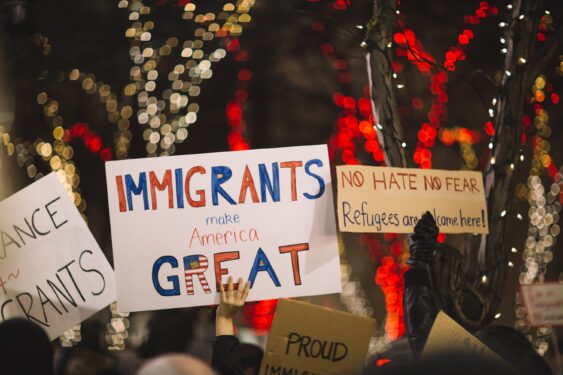
WINDSOR TERRACE — The Diocese in Brooklyn and Queens is often called the “Diocese of Immigrants” and with good reason. There are large numbers of foreign-born parishioners in its churches.
Diocesan officials are busy digesting a new report that sheds light on the vulnerability of a particular subset of immigrants — those who are not naturalized U.S. citizens — when it comes to health care.
The Center for Migration Studies (CMS) of New York issued a 40-page study, “Mapping Key Determinants of Immigrants’ Health in Brooklyn and Queens,” on Feb. 23 and looked at the two boroughs neighborhood by neighborhood to determine which non-citizen immigrant communities are most at risk. Bishop Nicholas DiMarzio is a member of the Board of Trustees of CMS.
Father Patrick Keating, the econome, general counsel and vicar for financial administration for the diocese, called the release of the report “a historic and important moment.”
Father Keating is also the CEO of Catholic Migration Services and the deputy CEO and associate vicar for human services at Catholic Charities Brooklyn and Queens.
The population CMS studied included undocumented immigrants as well as immigrants who settled in the U.S., enjoy legal status, but who have not become American citizens. The neighborhoods are broken down into community districts and closely parallel community boards in New York City. The data was obtained from U.S. Census Bureau figures and the results of community health surveys conducted by the New York City Department of Health.
In Brooklyn. Sunset Park/Windsor Terrace community district topped the most vulnerable list, followed by Bushwick and Bay Ridge/Dyker Heights.
In Queens, the community district of Elmhurst/South Corona was found to be most at-risk, followed by Jackson Heights/North Corona and Flushing/Murray Hill/Whitestone.
Vicky Virgin and Robert Warren, the authors of the study, incorporated six factors in determining which community districts are vulnerable: lack of health insurance, lack of high school diploma, people living below the poverty line, overcrowded living conditions, people with limited English proficiency (LEP) and undocumented status.
A community district did not have to score high in all areas to make the at-risk list, but some communities had higher than average percentages in at least two or three categories.
“It was really important to sort over the data,” Warren said at a webinar on March 1 where the findings were discussed.
Father Keating, who moderated the webinar, said he was struck by the difference in projected health care outcomes between naturalized citizens and non-citizens. “It was quite stark,” he said.
The non-citizen immigrant community district of Sunset Park/Windsor Terrace, for instance, was deemed most vulnerable because it has a high percentage of people with limited English proficiency (83.3 percent) and a high percentage of residents lacking a high school diploma (more than 40 percent).
Bushwick came in second on the most vulnerable list due to the large percentage of people lacking health insurance (35.8 percent), the poverty rate (31.6 percent), and the percentage of residents who did not graduate from high school (43.1 percent).
The Bay Ridge/Dyker Heights community district has a vulnerable population of immigrants because of its high poverty rate — 32.5 percent.
Given that the Bay Ridge/Dyker Heights community district is considered a solid, middle-class area, its presence so high on the vulnerable list might seem surprising. “It was not a community district I would have thought. But you have to remember that we chose to focus on non-citizens,” Virgin said.
Virgin explained that while Bay Ridge/Dyker Heights might not have large numbers of non-citizens, the ones who do call the community home have a high poverty rate.
All of the Queens neighborhoods cited in the study had the same factors — high levels of overcrowded living conditions, limited English proficiency, and a large percentage of uninsured.
In addition, the communities also have a large share of undocumented immigrants.
In Elmhurst/South Corona, 18 percent of non-citizen residents live in overcrowded conditions, 77.5 percent have limited English proficiency, and at least 40 percent lack health insurance.
For Jackson Heights/North Corona, here are the numbers: overcrowded living conditions (17.1 percent), limited English proficiency (81.6 percent), and percentage of residents without health insurance (more than 40 percent).
In Flushing/Murray Hill/Whitestone, the figures are: overcrowded living conditions (8 percent), limited English proficiency (88 percent), and lacking health insurance (more than 30 percent).
The goal of the study is to enable health care providers, governmental agencies, and nonprofit entities — including faith-based institutions — to identify gaps in health care services and make adjustments, according to CMS.
Virgin and Warren also include recommendations on how to lower the health care risk.
“Health insurance is important. We should be working to get more people insured,” Virgin said. “We would also like to see more people become citizens. Naturalized citizens have access to government programs.”
Virgin also called for institutions to establish so-called wrap-around services that would allow immigrants to become more proficient in English, study for the citizenship test, and receive health care all under one roof.
